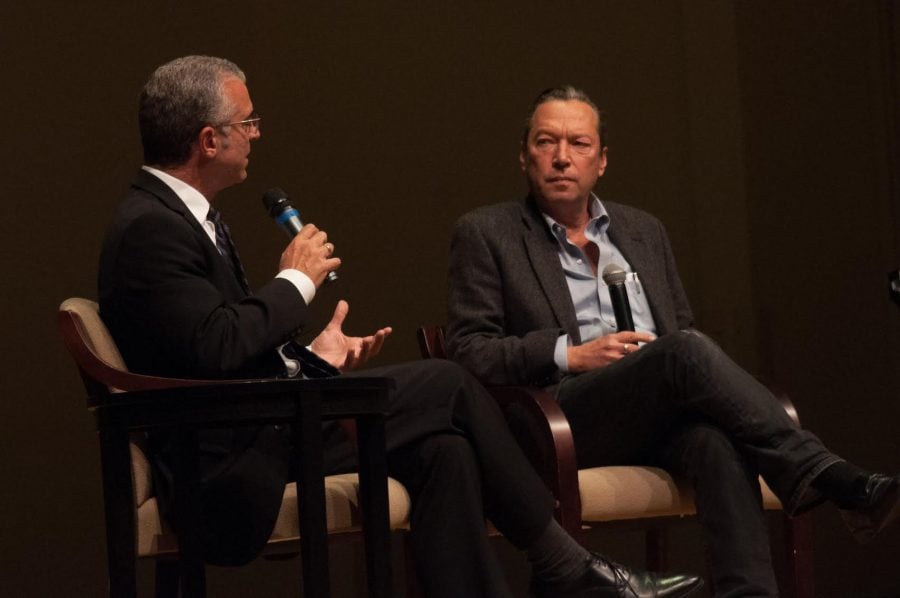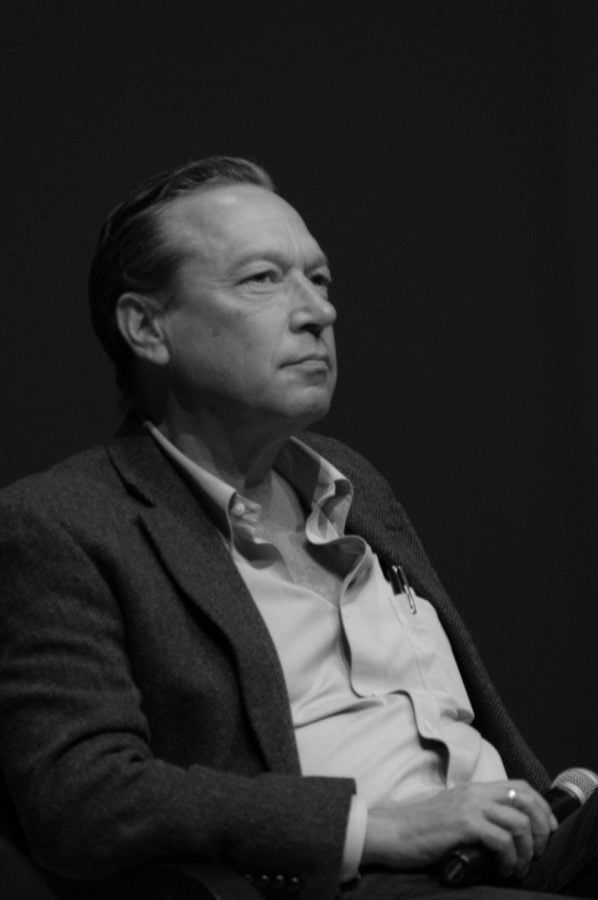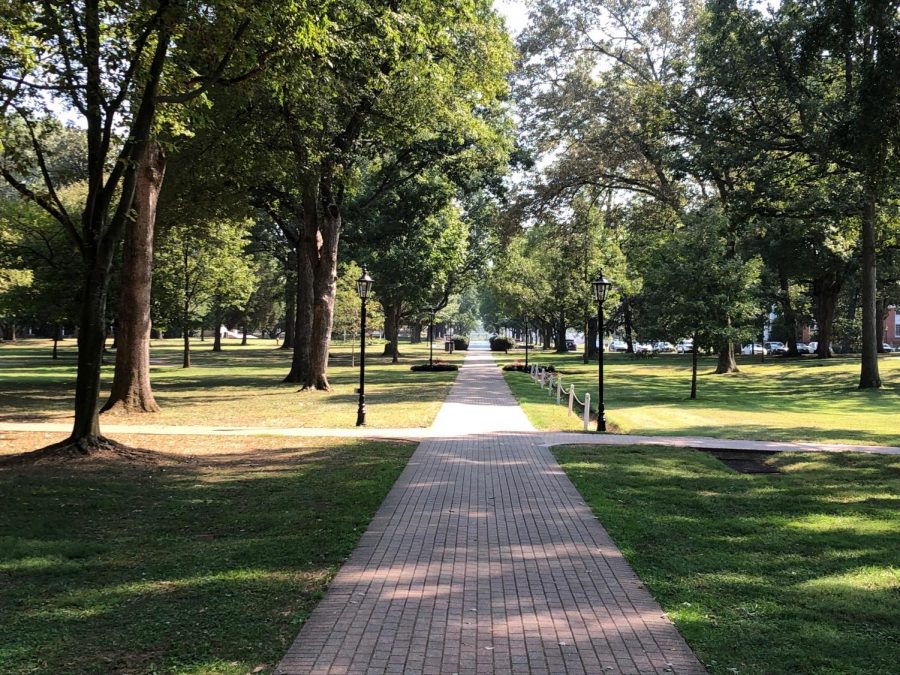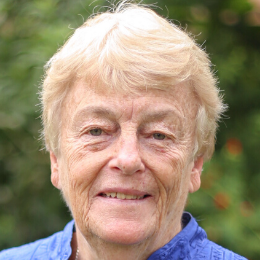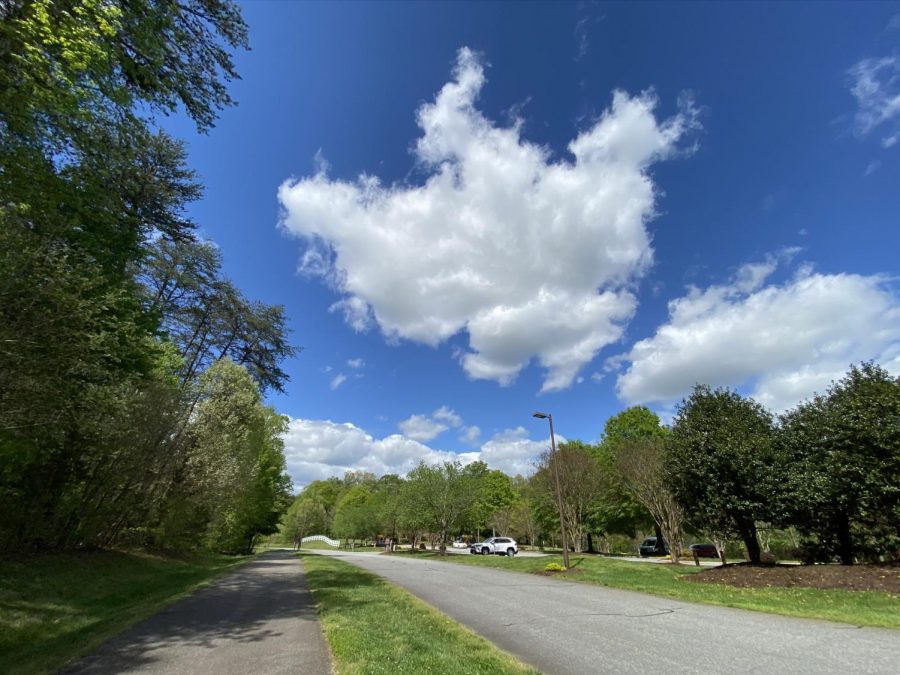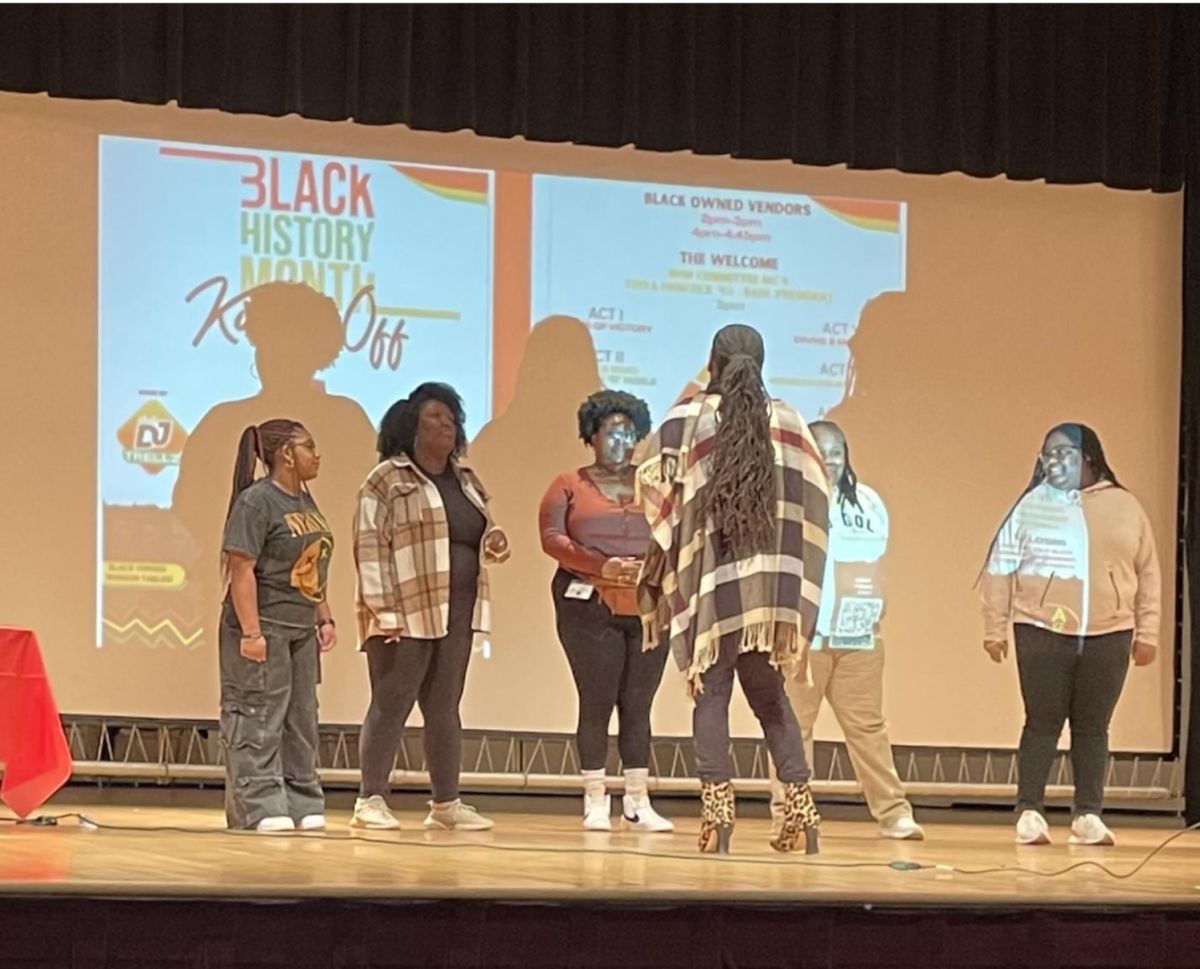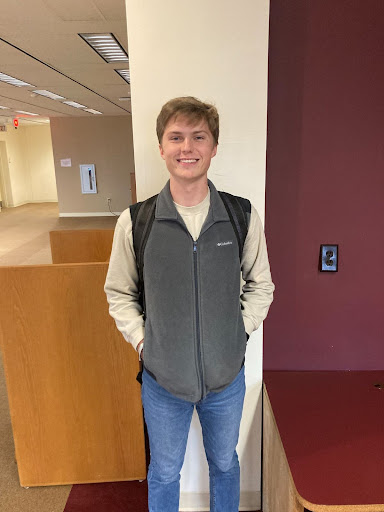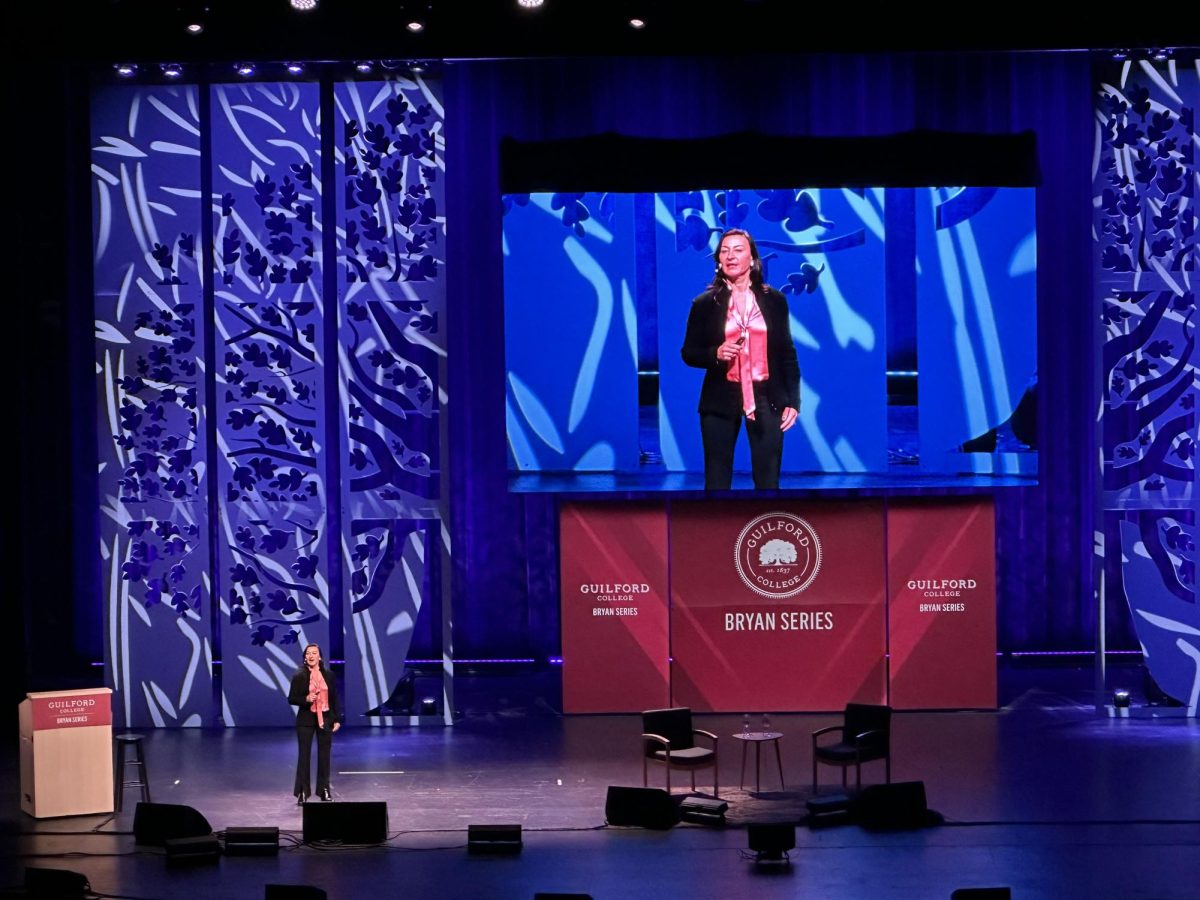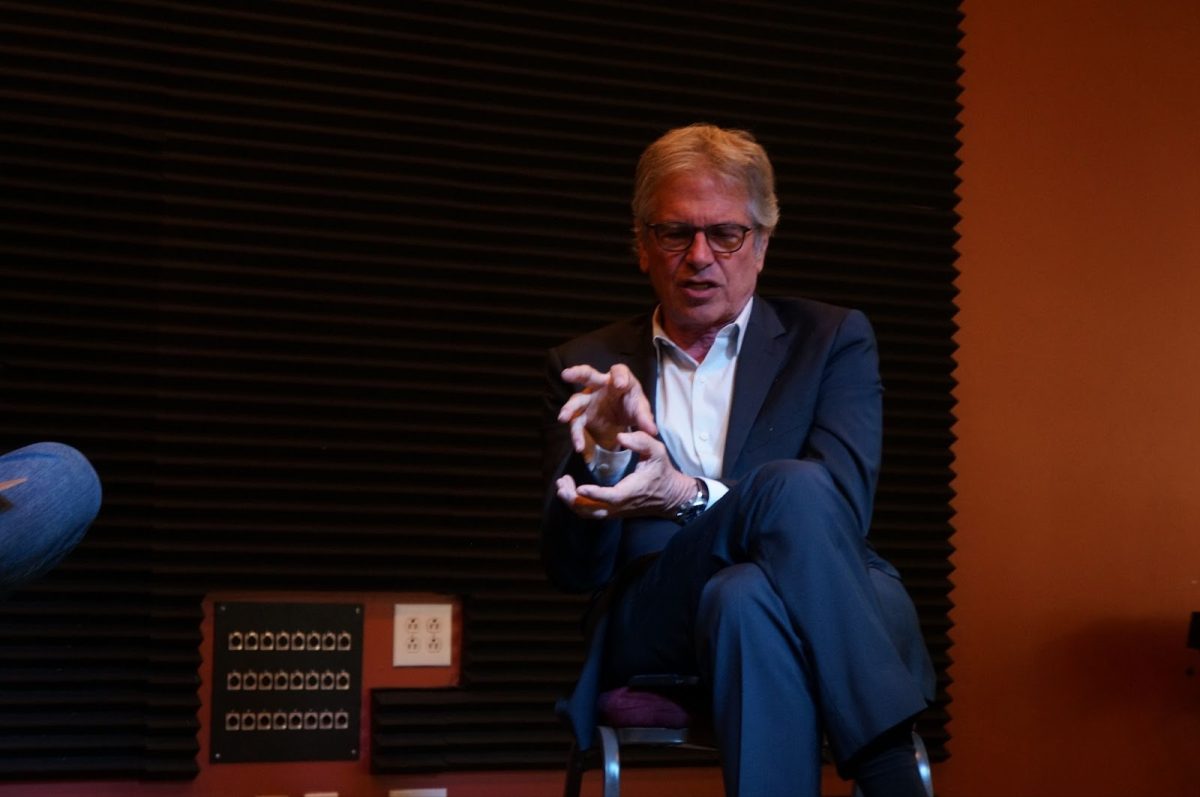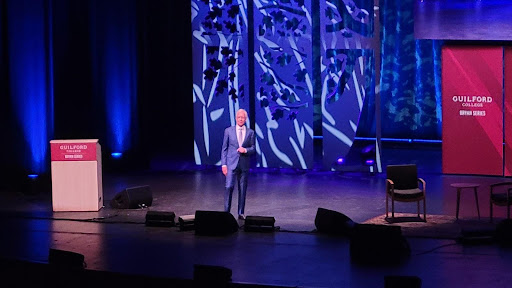Guilfordian Staff writers Jacqueline Carr and Evan Gorgen contributed to this story.
New York Times journalist Scott Anderson shared his work and experiences from his most recent project,“Fractured Lands,” at Wake Forest University on Wednesday, Oct. 26, 2016. The 42,000-word project took 18 months to document and marked the first time the magazine had dedicated an entire issue to one story. Photographer Paolo Pellegrin worked with Anderson on the piece.
Approximately 300 people attended the event held in the James David Brendle Hall on Wake Forest campus in Winston-Salem, North Carolina. The presentation was one of the 150 events sponsored annually by the Pulitzer Center on Crisis Reporting.
Anderson said he usually finds one person to tell the story of many. With this project, he chose six individuals from different countries in the Middle East, including Syria, Egypt, Libya and Iraq.
Anderson described his approach as finding a group of people who could tell the history of what has happened. His goal is “to give people a broader understanding. Not just a headline but a human face to refugees and even ISIS.”
For example, Anderson interviewed Wakaz Hassan, 22, who was a day laborer who joined ISIS because his friends did and it paid $400 a month. Anderson compared young people joining ISIS to American teens joining gangs.
“I went to the worst places where most news is bad news and there was very little optimism going forward,” Anderson said. “In Syria, they get through day by day.”
This event is a part of a larger event series called NewsArts project, which is an initiative of the Pulitzer Center and based in Winston-Salem, North Carolina. The NewsArts initiative explores the intersections between journalism and art as well as how creative writing can help improve journalism and engage the world with global issues, both positive and negative, according to Jon Sawyer, executive director of the Pulitzer Center, based in Washington D.C.

